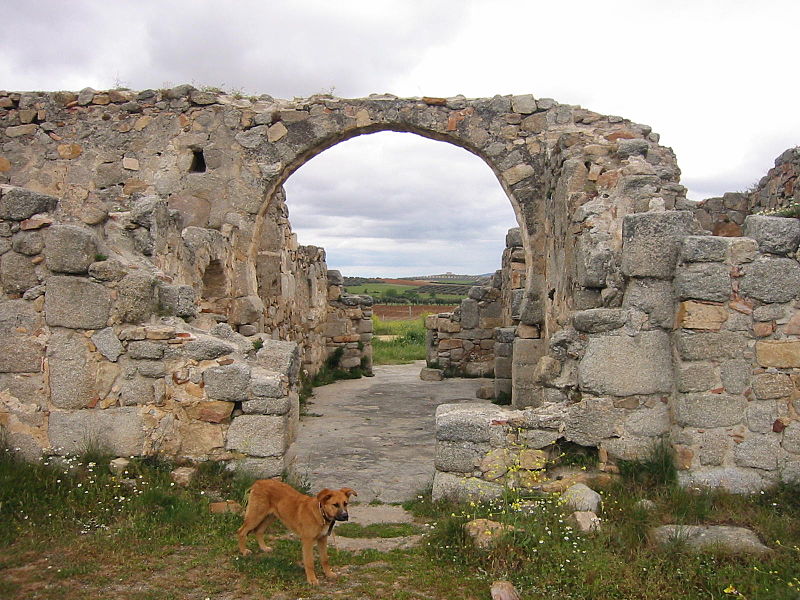  |
| Castle of Saldaña (11th c) It is currently in ruins. 19th c drawing / Queen Urraca of León and Castile. (Tumbo A, 12th c) |
Place of death of Queen Urraca of León and Castile (1126). In 1128 the castle witnessed the royal wedding of his son Alfonso VII and Berenguela of Barcelona. A bullfight took place at the Plaza Vieja to celebrate the event. It is the first documentary reference to a bullfight in Spain. The Castle of Saldaña is also the birthplace of Bernardo del Carpio, a hero of medieval Kingdom of Asturias. He was the son of the Count of Saldaña and Dona Ximena. King Alfonso II was not happy with this secret marriage, so he had Count Sancho blinded. He raised the child and ordered not to tell his nephew who his father was. Stories feature him striving against Alfonso to release his father from
prison.
Castle of Monzón de Campos
In 1028 Count García was killed on his way to meet his bride in the city of León. He was speared to death by the three Vela brothers, in revenge for an offence against their family. The facts are recounted in the Romanz del Infant García. According to the legend, they sought refuge in the castle of Monzón de
Campos, where they were surrounded and executed.
http://www.monumentalnet.org/castilla_y_leon/palencia/monzon_de_campos/monzon_de_campos/castillo_de_monzon_de_campos.php?vis=11Palace of Astudillo 14th c
http://www.discoverislamicart.org/database_item.php?id=monument;ISL;es;Mon01;23;es
Pedro the Cruel and María de Padilla built this islamic stylish palace. It houses a Museum of Mudejar art.
 |
| Castle of Ampudia (15th c) |
http://galeon.com/castpalencia/ampudia.htm

Castle of the Sarmiento family (15th c)
According to the legend, in the past there was an ancient sword whose hilt, wrapped into parchment, was embedded into the wall (SE round turret). It is said it had belonged to Sancho Díaz (Bernardo del Carpios's father). The steel blade projected from the wall; it was the symbol of the lord's jurisdictional rights and perhaps was used in executions.
Castle of Hornillos de Cerrato
In 1507 Queen Joanna of Castile (Joanna the Mad) took her husband's coffin and had it carried through the fields, as she lodged in the castle, on her way to Tordesillas.
http://hornillosdecerrato.es/index.php/multimedia/castillo/
Castle of Torremormojón (15th c)
It is said that there is a secret tunnel leading from this castle to the castle of Ampudia. It is called "The Star of Campos" (The Star of the Fields), since at the time of Reconquista signal fires were lit in the night to communicate with the nearby castles.
http://www.castillosdepalencia.es/torremor/torremor.htm








